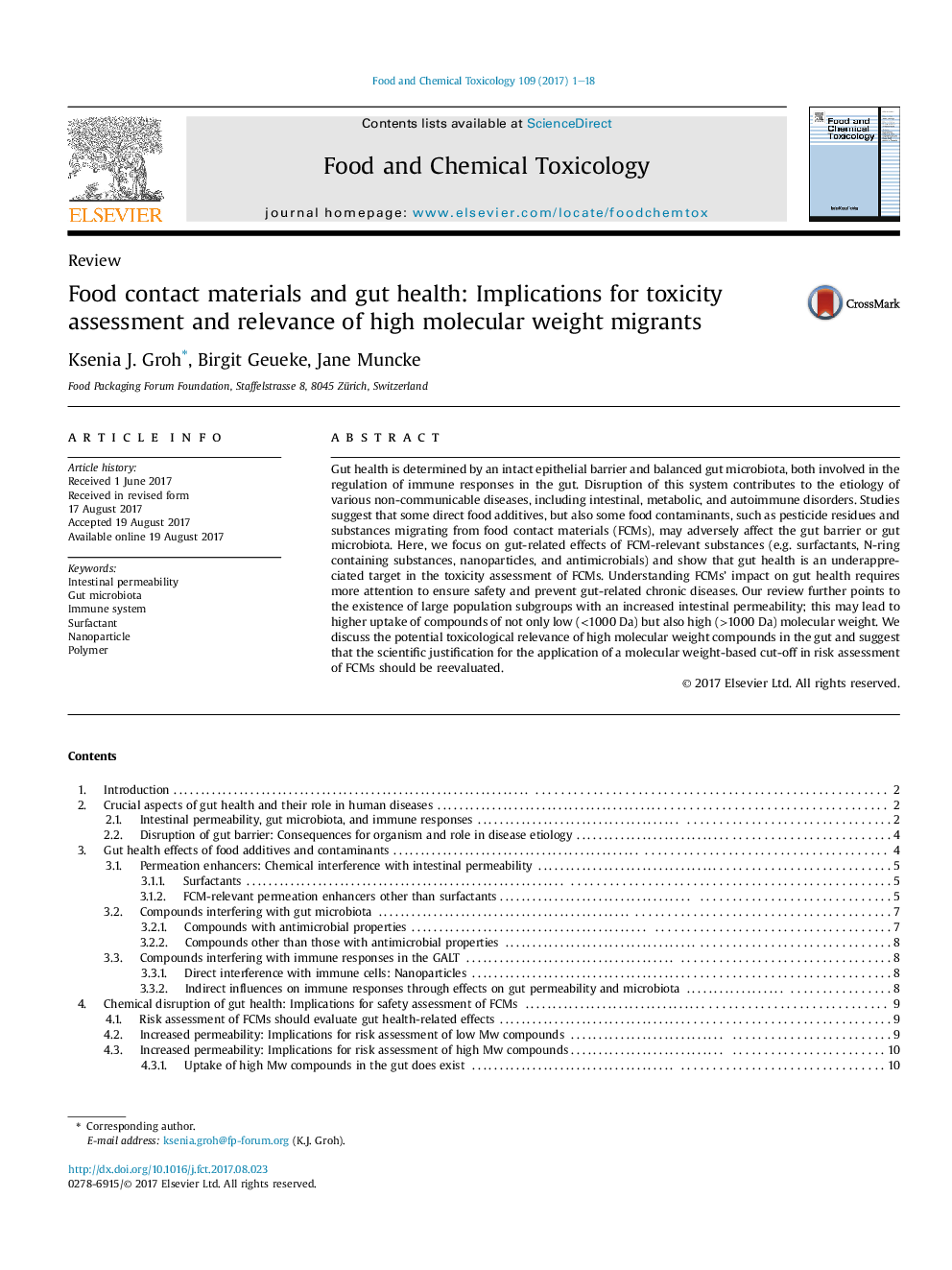| کد مقاله | کد نشریه | سال انتشار | مقاله انگلیسی | نسخه تمام متن |
|---|---|---|---|---|
| 5559947 | 1403305 | 2017 | 18 صفحه PDF | دانلود رایگان |
- Gut permeability, microbiota, and immune responses may be affected by several types of food additives and food contaminants.
- Gut permeability may be affected by e.g. surfactants, N-ring substances, some polymers, nanoparticles, and xenoestrogens.
- Gut microbiota may be affected by e.g. antimicrobials, surfactants, some polymers, metals, and nanoparticles.
- As food contact materials are one source of these substances, safety assessment should consider potential gut health impacts.
- High molecular weight substances may be toxicologically relevant due to increased uptake, potential immune system effects.
Gut health is determined by an intact epithelial barrier and balanced gut microbiota, both involved in the regulation of immune responses in the gut. Disruption of this system contributes to the etiology of various non-communicable diseases, including intestinal, metabolic, and autoimmune disorders. Studies suggest that some direct food additives, but also some food contaminants, such as pesticide residues and substances migrating from food contact materials (FCMs), may adversely affect the gut barrier or gut microbiota. Here, we focus on gut-related effects of FCM-relevant substances (e.g. surfactants, N-ring containing substances, nanoparticles, and antimicrobials) and show that gut health is an underappreciated target in the toxicity assessment of FCMs. Understanding FCMs' impact on gut health requires more attention to ensure safety and prevent gut-related chronic diseases. Our review further points to the existence of large population subgroups with an increased intestinal permeability; this may lead to higher uptake of compounds of not only low (<1000Â Da) but also high (>1000Â Da) molecular weight. We discuss the potential toxicological relevance of high molecular weight compounds in the gut and suggest that the scientific justification for the application of a molecular weight-based cut-off in risk assessment of FCMs should be reevaluated.
237
Journal: Food and Chemical Toxicology - Volume 109, Part 1, November 2017, Pages 1-18
